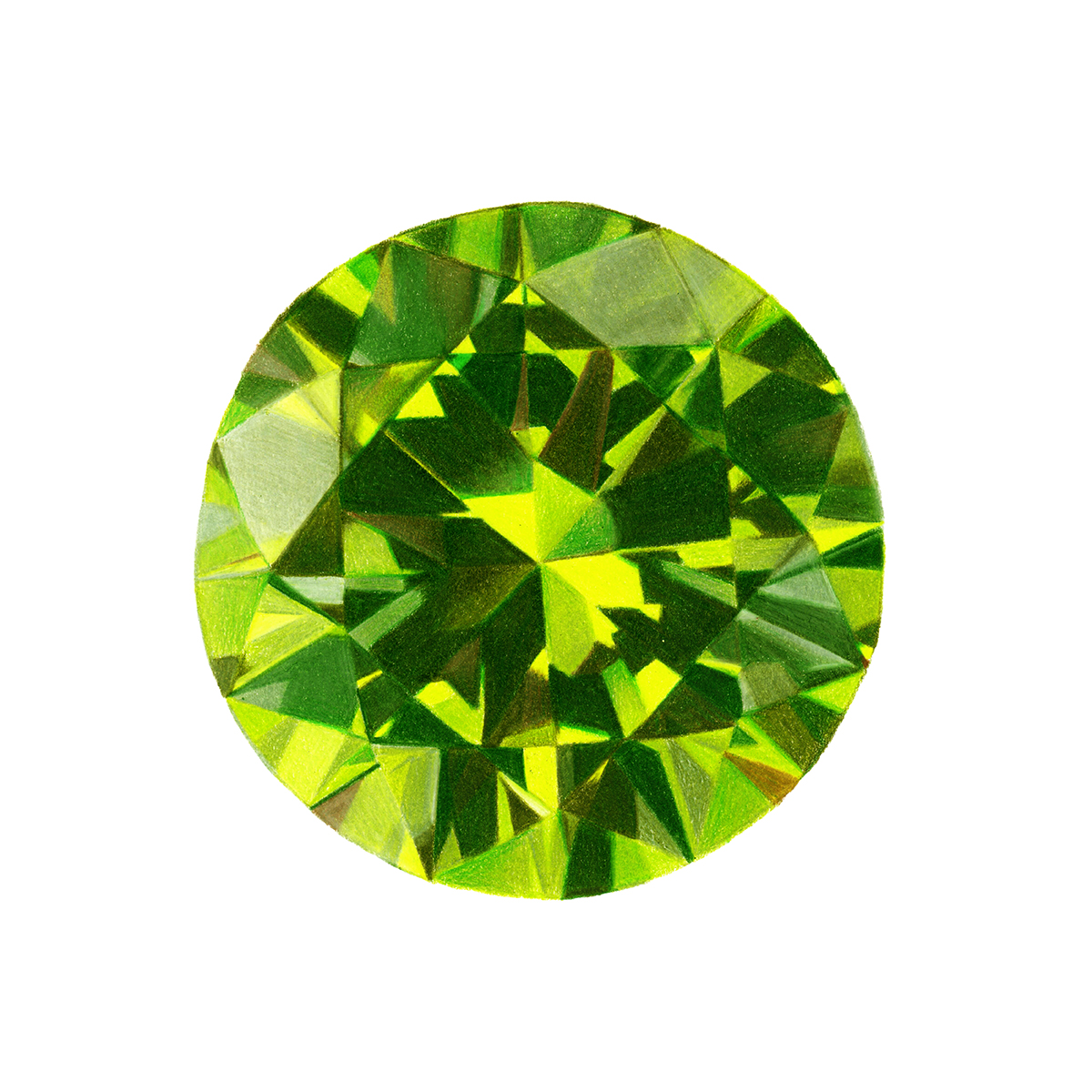Stone: Peridot
Birthstone: Month of August
Country of origin: Zabargad in Egypt (previously called, Topazios), Mogok in Myanmar, Australia, China, Pakistan, Tanzania, Vietnam, Arizona and Hawaii.
About Peridot: Peridot is known for its formation under extreme conditions, as it can be found in the hardened lava that carries it from deep within Earth's mantle, as well as in pallasite (nickel-iron and olivine) meteorites that travel from outer space. It is a yellowish-green to greenish-yellow gem variety of the mineral, olivine.
An idiochromatic gem, peridots get their characteristic green colour from iron, an essential element of their chemical structure. It is one of the few gemstones to come in only one colour.
What is the meaning of Peridot? Peridot is thought to bring power and influence, love, happiness and wealth to its wearer. Used for centuries as a protective talisman, it was believed to ward off evil spirits and "terrors of the night." Ancient sages considered peridot to be a gift from Mother Nature to symbolise the annual renewal of creation. It is also traditionally given as a gift for the 16th wedding anniversary.
What is the history of Peridot? The word "peridot" comes from the Arabic faridat, meaning gem. Throughout history, peridot has often been confused with other gems such as topaz and emeralds. The volcanic island of Zabargad in the Red Sea of Egypt, was previously called Topazios - named for the "topaz" it produced, which was actually peridot. It is the oldest recorded source of peridot, with mining thought to have begun in Ancient Egypt around 340-279 B.C.E.
Since the second century B.C., peridot has been featured in the adornments of priests and churches across Europe and the Middle East. The gem was used at the Shrine of the Three Holy Kings in the Cologne Cathedral in Germany, in which 200 carats of supposed emeralds were actually found to be peridots.
In 2003, NASA reported that peridot had been found on Mars, making it the only gemstone known to occur on another planet.
What is the provenance/traceability of Peridot? We are currently working through the traceability and supply chain of these stones, watch this space.
Caring for Peridot: Peridot is softer than many gems, sensitive to scratching and cannot take hard wear. Therefore not recommended for daily wear. It can be damaged by some acids and even by longterm exposure to acidic perspiration.
Cleaning peridot is a delicate process. Never use steam or an ultrasonic cleanser, as peridot is vulnerable to thermal shock. It is safest to use a soft-bristle brush with mild soap in warm water. Store with care to avoid scratching by gems with greater hardness. Remove when swimming, washing dishes or using abrasive materials.
_
Discover Meadowlark pieces available with an Peridot stone here & explore our Gemstone Guide here x






